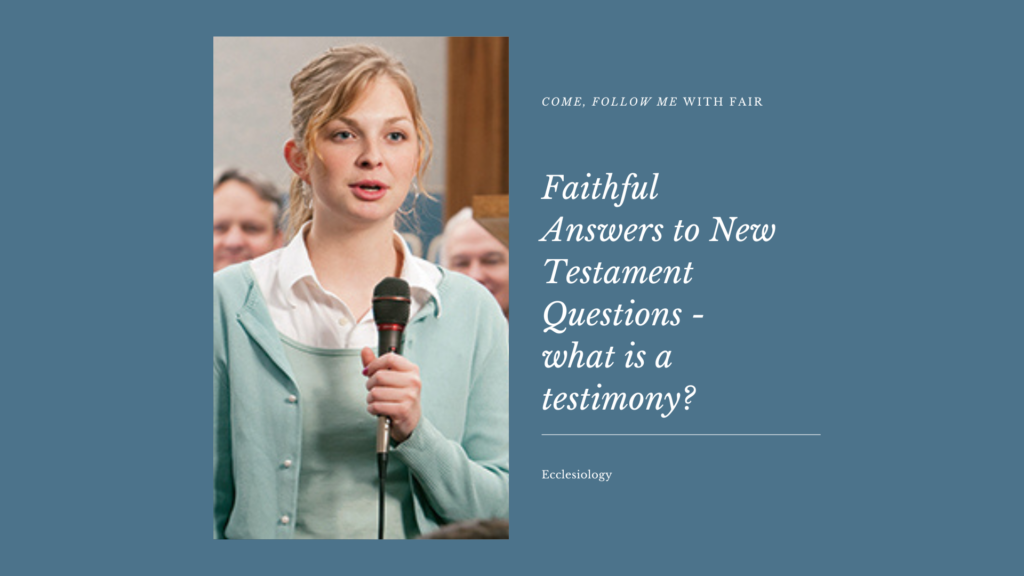"A Minister and a Witness"
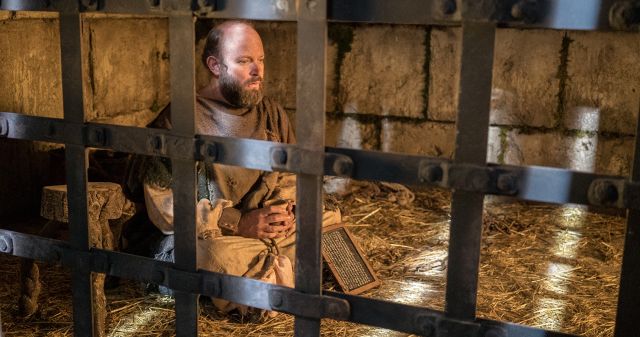
Jul 31-Aug 6

FAIR Faithful Resources for Come, Follow Me 2023 July 31– Aug 6. Acts 22–28: “A Minister and a Witness.” Find answers to difficult questions to help you in your learning and teaching. Here is a collection of reliable resources to supplement your study of Acts 22–28. FAIR Resources link to relevant questions which have been answered on the FAIR website. Under Church Resources you’ll find links to the different Come, Follow Me manuals, as well as other helpful links as applicable. Other Resources link to resources outside of FAIR that are trustworthy and helpful.
Main points to ponder
The lesson draws a comparison between Paul and Joseph Smith: “when young Joseph Smith was ridiculed for telling about his First Vision, he was inspired by the way Paul testified of his vision.” Consider these sources:
- When Paul delivered the powerful testimonies recorded in Acts 22 and 26, he was being held prisoner by Roman soldiers.
- Paul chose to boldly bear witness of Jesus Christ and “the heavenly vision” (Acts 26:19) he had received.
- Joseph Smith—History 1:24–25
- Neil L. Andersen, “We Talk of Christ”
As you ponder the differences and similarities of these two witnesses of Jesus Christ, you may wish to evaluate your own discipleship:
- What opportunities have you had to share your testimony?
- Do your friends and family know of your testimony and how you obtained it?
- What can you learn and apply in your own life from the examples of Paul and Joseph Smith?
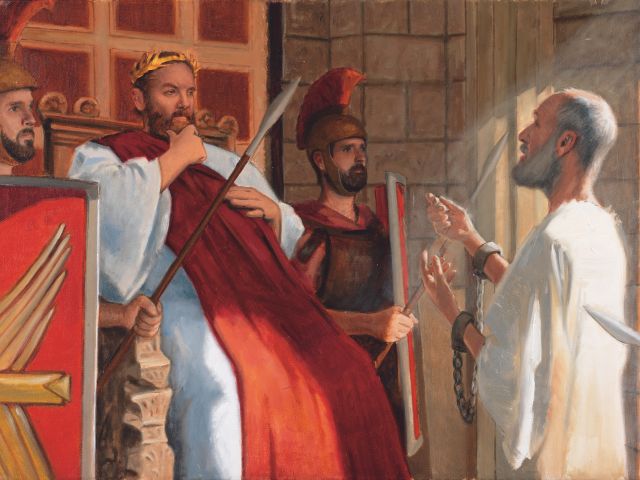
Faithful Resources on the FAIR website:
Resources on the Church website:
Come Follow Me for Individual Study: Come, Follow Me – For Individuals and Families
Come Follow Me for Sunday School: Come, Follow Me—For Sunday School
Come Follow Me for Primary: Come, Follow Me—For Primary
New Testament Videos: The Road to Damascus, Acts 22 , Be of Good Cheer, Acts 23:11 , Paul, A Chosen Vessel
Faithful Resources from other reliable websites:
- Scripture Central, Lynn Hilton Wilson: Acts 22-28: New Testament with Lynne Wilson (Come, Follow Me)
- Scripture Central, Taylor and Tyler: Acts 22–28 | Jul 31 – Aug 6 | Come Follow Me Insights
- The Scriptures are Real, Kerry Muhlestein: Acts 22-28, July 31-Aug 6
- Follow Him, John Bytheway and Hank Smith: Part 1 with Scott Woodward, Part 2 with Scott Woodward, How can I be more bold like Paul? • followHIM Favorites • July 31 – Aug 6
- Unshaken, Jared Halverson: Come Follow Me – Acts 22-28 (part 1): Almost Thou Persuadest Me, Come Follow Me – Acts 22-28 (part 2): Paul’s Final Journey
- Talking Scriptures, Bryce Dunford and Mike Day: Ep 213 | Acts 22-28, Come Follow Me 2023 (July 31-August 6)
- Don’t Miss This, David Butler and Emily Freeman: Come Follow Me New Testament Acts 22-28 (July 31-Aug. 6) Don’t Miss This
- BYU Scripture Roundtable Discussions: A Minister and a Witness: Acts 21-28
Dig Deeper
- General Conference Talks
- Elder Neal A. Maxwell: “Be of Good Cheer”
- Elder Jörg Klebingat: Valiant Discipleship in the Latter Days
- Elder Russell M. Nelson: Be Thou an Example of the Believers
- Conference Talk “Snippets”
- Richard G. Scott: Growing Through Life’s Trials, Acts 28: 1-10
- Elder Spencer J. Condie: Prophets Warning, Acts 27:9-44
- Elder Dallin H. Oaks, Valiant In Testimony, Acts 24: 10-21
- BYU Devotionals
- Sister Len B. Novilla: Journey of the Soul, Anchors of the Heart | BYU Speeches
Lesson Devotional
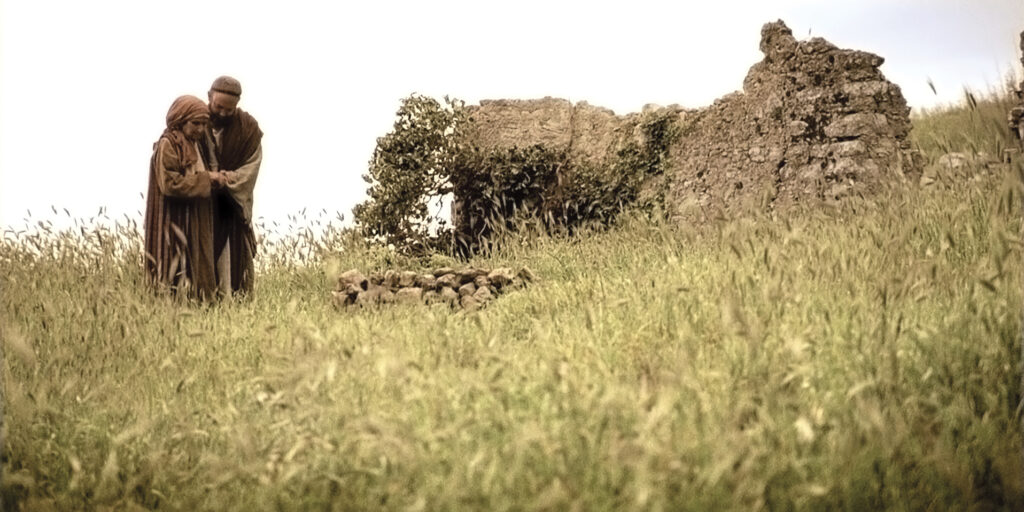
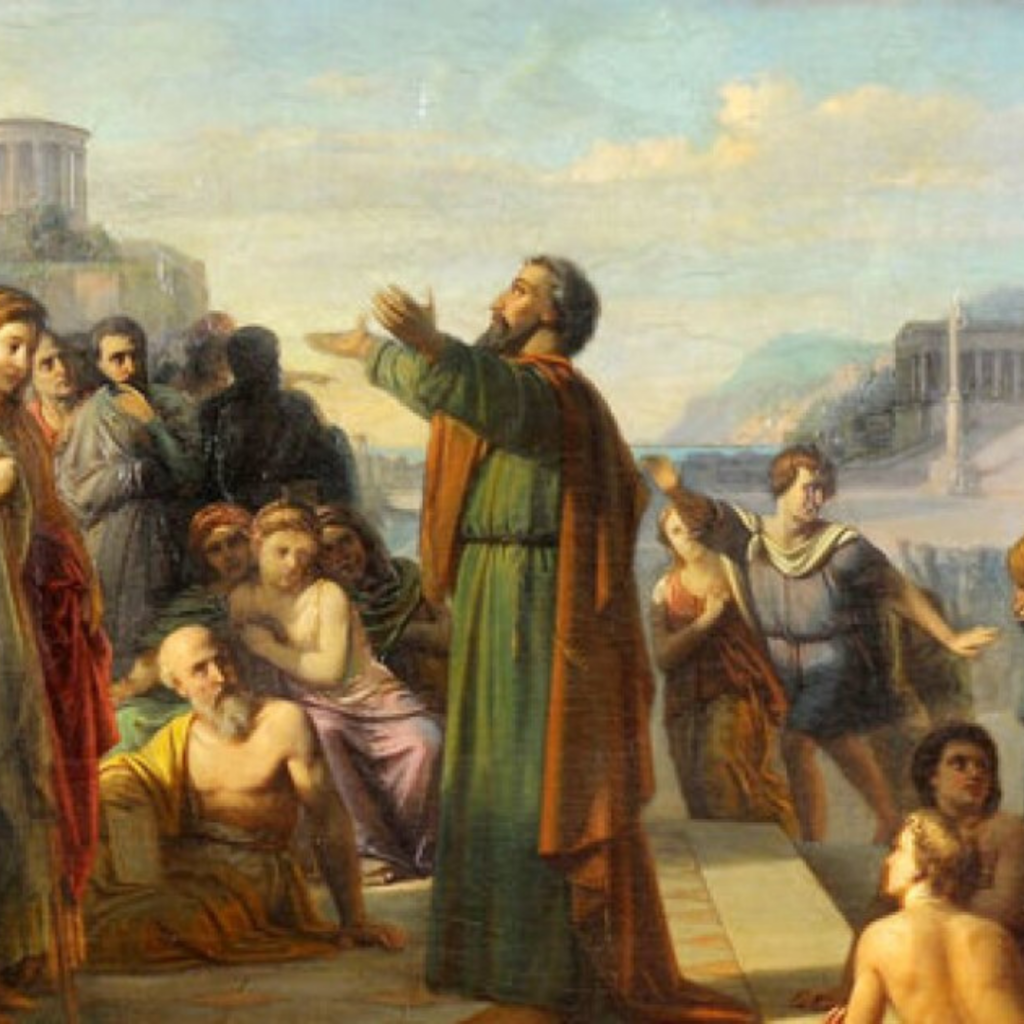

Dawna is an active member of The Church of Jesus Christ of Latter-day Saints in Garden Valley, Idaho. She is married to Ray Booth and is the mother of four and grandmother of ten. She finds it an honor to have served in many callings through the years, especially in Relief Society presidencies and in music callings.
Professionally, she owned an interior design center, and for the past ten years owned a center that specializes in assisting children with developmental challenges manage and improve their abilities. She loves searching the treasured documents of Wilford Woodruff and assisting in a small way to bring them to you.

Lesson devotionals are provided by the Wilford Woodruff Papers Foundation. Its mission is to digitally preserve and publish Wilford Woodruff’s eyewitness account of the Restoration of the gospel of Jesus Christ from 1833 to 1898. It seeks to make Wilford Woodruff’s records universally accessible to inspire all people, especially the rising generation, to study and to increase their faith in Jesus Christ. See wilfordwoodruffpapers.org.
“A Minister and a Witness”
By Dawna
In studying the difficult years of Paul’s imprisonment, I am humbled by his great strength to stand as a witness for Jesus Christ. He was ever confident in his testimony of the miraculous vision of the Savior, proclaiming its truth throughout the Roman world. He withstood the efforts of the wicked Sanhedrin to murder him; he suffered trials by Felix, Festus, and Agrippa II; and he underwent another shipwreck on his way to Rome as a prisoner. He was able to testify and teach the gospel during all of those difficult years. David Patten, a modern-day Apostle, was equally committed. He was valiant in his testimony, and during the Missouri conflict in 1835, he led 75 brethren in the Battle of Crooked River. He fell in this battle trying to liberate three captives and was a martyr to his faith.
My husband’s ancestor Anne Eastwood Booth, one of the first Saints baptized in England, saw David Patten in a vision on March 12, 1840. Wilford Woodruff’s journal gives an account of this important early vision on the redemption of the dead. Because of the efforts of President Woodruff in recording these precious events, we learn that the gospel was being preached to spirits in heaven even before Joseph taught this doctrine. And, on a personal note, our family was blessed to extend our family tree another generation because of her account. The following are excerpts from Anne’s vision.
Being carried away in a vision to the place of departed souls . . . I beheld one of the 12 Apostles of the Lamb who had been martyred in America standing at the door of the prison holding a key with which he unlocked the door and went in and I followed him. . . . The Apostle then called to John Wesley by name who came forward quickly and both went down into the water and he baptized him and coming up out of the water he laid hands upon him for the gift of the Holy Ghost at the same time ordaining him to the Priesthood of Aaron . . .
The next he baptized was my grandfather (Edmund Whitehead) and the next was my Uncle (John Whitehead) and the next was my sister (Elizabeth Ottand) and next Joseph Lancashire and next Samuel Robinson and the next was my own mother . . . After this he baptized all the prisoners amounting to many hundreds. After they were all baptized, the Apostle laid his hands on them and confirmed them every one. Then instantly the darkness dispersed and they were all surrounded and enveloped in a brilliant light . . . and they all lifted their voices with one accord giving glory to God for deliverance.1
When Anne discovered that David W. Patten had been martyred in America, she knew he was the man she had seen in her vision. I am grateful for Anne and her remarkable vision, and for Wilford Woodruff for recording it.
Some original historical text has been edited for clarity and readability.
Endnotes
1 Account of Anne Eastwood Booth’s vision in Wilford Woodruff’s Journal, recorded July 2, 1840, pp. 143–144, The Wilford Woodruff Papers, wilfordwoodruffpapers.org/journal/1840-07-02.


Chapter Summaries
1-5: Paul explains he used to persecute Christians.
6-16: Paul shares the story of his conversion.
17-21: Paul recounts the vision in which he was instructed to leave Jerusalem
22-30: Those listening attack Paul. He is arrested. He is about to be punished when he declares his Roman citizenship. The guards hold off on punishing Paul, hold him until the morning when he and his accusers are brought together.
1-10: The next morning, Paul and both Pharisee and Sadducee leaders are together. Paul again offends them by declaring that he is only doing God’s will. They threaten Paul, who is able to get them arguing amongst themselves by talking about the resurrection. Though the guards find that Paul has done nothing wrong, they keep him in the barracks to protect him from the fighting leaders.
11: The Lord visits Paul, encouraging him to have courage, and instructing him to go to Rome.
12-35: Certain of the Jews swear an oath that they will neither eat nor drink until they have killed Paul. Paul’s nephew overhears the plot, tells Paul who arranges for the barrack’s commander to be told. The commander arranges for Paul to be taken to another jurisdiction and for the charges to be presented there. Paul is safely transported to Herod’s palace and they wait for the accusers to arrive.
1-9: Ananias, the Chief Priest, arrives and presents the case against Paul. He is accused of stirring up trouble and defiling the temple.
10-13: Paul is given the chance to speak. He says that all the charges are false and that no evidence can be found to back them up.
14-21: Paul mentions the common ground he has with his accusers – belief in God, in the scriptures, in the resurrection and his service to the poor. He claims it was not him, but some from Ephesus who began stirring up trouble. Paul believes that it is his statements about the resurrection that are the reason he has been brought before the governor.
22-27: Though the governor, Felix, could have made a judgment, he hesitated for political reasons. Paul is kept in prison, though not in harsh conditions. Paul preaches to Felix and his wife, Drusilla, though Felix continues to not make a decision on the case. Paul is left in prison for two years.
1-12: After a change in leadership, the new governor, Festus, attempts to deal with Paul’s situation. Again, Jewish leaders are brought in who hurl baseless claims at the court. Festus, to stay on the good side of the Jewish leaders motions for a change of venue, to Jerusalem. Paul, tired of the whole situation, demands to be sent to Rome.
13-22: In Caesarea, Festus is visited by King Agrippa and his wife Bernice. Festus explains the whole situation to Agrippa, who expresses an interest to hear Paul tell his own story.
23-27: Paul is introduced to Agrippa and Festus explains that he needs help to figure out how to present this “Paul Problem” to the authorities in Rome, seeing that in the eyes of the law Paul has done nothing wrong.
1-23: Paul again recounts his history, beginning with his religious upbringing and desire to obey God. He then describes his persecution of the Christians, followed by his conversion on the road to Damascus. He concludes with his testimony that Jesus is the promised Messiah and that is the message he is trying to share with the world, not just the Jews.
24-32: Festus thinks Paul is deluded, but Paul can tell that Agrippa is beginning to believe what he is saying. Agrippa agrees. Both Festus and Agrippa agree that Paul has done nothing criminal, but because Paul requested a hearing in Rome, that will need to occur.
1-10: Paul and several companions set sail under guard for Rome. They are treated well and allowed to go ashore to see friends as they stop in various ports along the way. Their journey is slow and as they get to the island of Crete, bad weather is approaching.
11-14: Against Paul’s warning, the guards try to sail to another port, one that would be better for an extended winter stay.
15-44: The boat is caught in a horrific storm. Though the sailors try many tactics, they are left with little hope of survival. However, Paul has had a vision that no lives will be lost, though the boat will be destroyed. The captain of the guard follows Paul’s advice, all are saved.
1-9: The shipwrecked crew find they are on Malta. The inhabitants are kind to prisoners and crew, though they don’t know what to make of Paul when he is bitten by a snake and does not die. Paul heals some of the inhabitants.
10-16: After three months on Malta, the prisoners are finally on their way to Rome. They land in Italy and are warmly greeted by the Italian Christians. They welcome the chance to worship with and be taught by Paul. Paul finally makes it to Rome, able to live in a rented house with a single guard.
17-28: Paul seeks and opportunity to share his message with the Jewish leaders in Rome. He recounts the trumped up charges in Jerusalem and how that led him to Rome. He shares his desire to preach the gospel to the Jews, though if they don’t want to hear his message he will preach to anyone. To the Jews, he explains how Jesus was the fulfillment of Old Testament prophecy.
29-30: Paul remains in Rome for 2 years, preaching tirelessly to all who will listen to his message.
Faithful Resources, and Faithful Resources. Also, Faithful Resources therefore Faithful Resources. But without Faithful Resources you’ll need Faithful Resources; because Faithful Resources help. Twelve apostles give Faithful Resources, therefore Faithful Resources abound. Since Faithful Resources at Faithful Resources then Faithful Resources because Faithful. Resources at Faithful Resources as Faithful Resources are Faithful Resources therefore Faithful Resources. Again, Faithful Resources Faithful Resources Faithful Resources Faithful Resources Faithful Resources Faithful Resources Faithful Resources. Since Faithful Resources then Faithful Resources.
